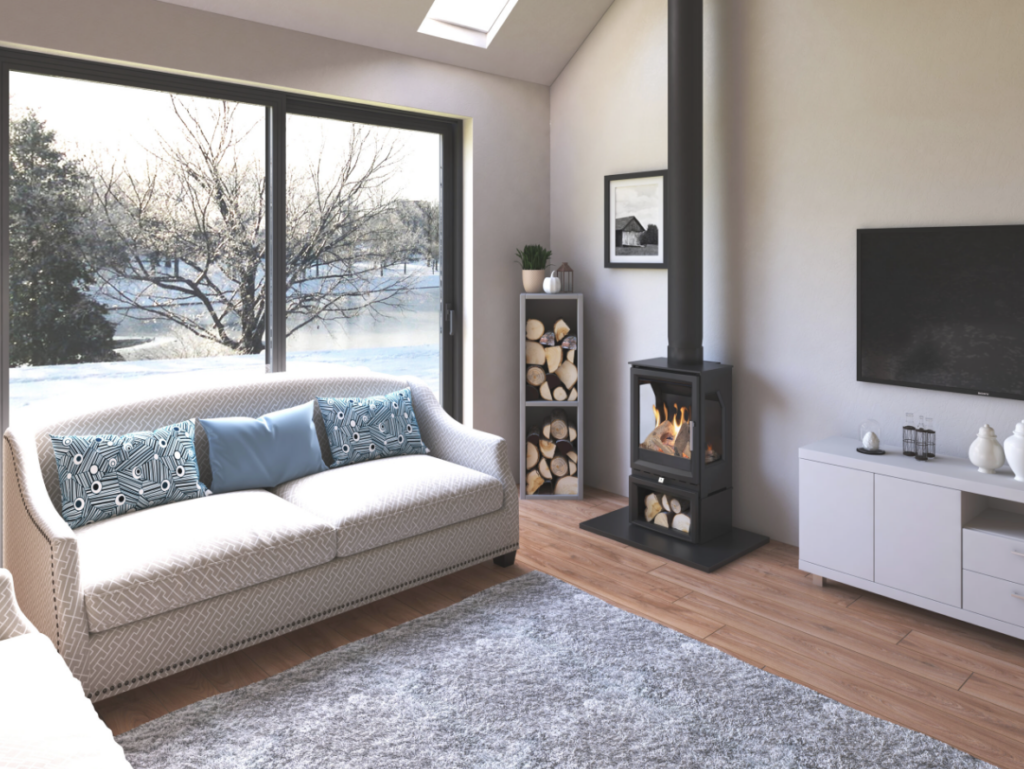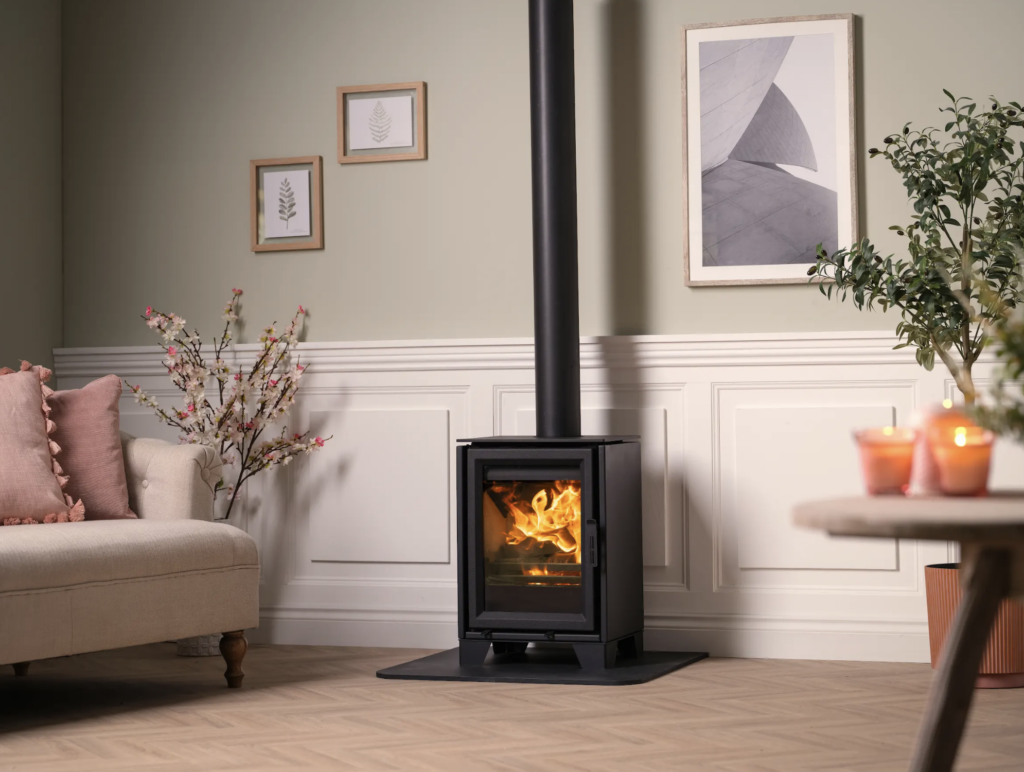The vast majority of our fires, whether wood, gas or electric, are fitted in customer’s living rooms. There is a very good reason for this – the living room is where most families relax when they are not sleeping or eating. As it’s a room you relax in, it’s important to get the design and feel just right. Interior design can offer so many options to bring a room to life. You don’t need an expert interior designer either – just some clever and creative insight can make a world of difference.
Here are a number of interior design tips which can transform your living room:
Select a Colour Pallet:
Selecting the right colour scheme sets the mood for your living room. Opt for neutral base colours and add pops of colour through accessories like pillows, rugs, and artwork. Consider how natural light affects your chosen shades to ensure they look great throughout the day. Here are a few colour insights to help you get the right look from the start:
Off-White – A warm, welcoming alternative to stark white.
Beige – Adds warmth and cosiness while keeping a clean look.
Taupe – A mix of grey and brown for a sophisticated, earthy tone.
Blush Pink – Adds a soft, romantic, and airy feel.
Baby Blue – Creates a fresh, tranquil, and light ambience.
Mint Green – Refreshing and soothing, ideal for relaxation.
Lavender – Gentle and elegant, great for bedrooms and living rooms.
Sage Green – A muted, natural green that brings in an organic, peaceful vibe.
Warm Gray – A subtle and sophisticated choice that pairs well with various styles.
Dusty Peach – A warm and inviting shade with a hint of vibrancy.
Pale Aqua – A light blue-green that feels refreshing and airy.
Soft Periwinkle – A subtle blue-purple for a dreamy, relaxing space.
Muted Sky Blue – A delicate shade that enhances openness and calmness.
Consider Natural Light
Lighting plays a big role in interior design – the living room is no exception. Keep windows clear of heavy drapes and use sheer curtains to allow more natural light in. Mirrors placed strategically can reflect light and make the living room feel larger and brighter. Mirrors create the illusion of space and help distribute natural light – especially if they are opposite a window. Mirrors can also create a sense of depth in a room. Below is an example of how natural light can lighten a room. Our Paragon Edge 3S gas stove is in a room which enjoys a huge amount of natural light from the generous patio windows and skylight.

Functionality:
Arrange furniture in a way that promotes ease of movement and enhances the living room’s functionality. Avoid overcrowding objects (ornaments, pictures, etc) and consider each object’s purpose. While you may want a number of ornaments, it’s useful to question if you need certain objects in a living room. If they are not ornamental and don’t serve a specific purpose, do you need them? In small living rooms, consider multipurpose furniture like storage ottomans and foldable tables.
Textures and Layers:
A mix of textures adds depth and visual interest to a living room. Combine materials such as wood, metal, glass, and textiles to create a well-balanced overall look. Layering elements like rugs, throws, and cushions can make the living room feel cosy and inviting. Layering different elements prevents a room from looking flat and monotonous. For example, pairing a textured rug with soft throw pillows and a nice coffee table creates a multi-dimensional space. Soft layers, such as blankets, cushions, and area rugs, make a room feel more inviting and cosy. This is especially effective in living rooms. Layering allows you to mix colours and patterns without overwhelming the space.
Limit Statement Pieces
A bold piece of artwork, an eye-catching light fixture, or a unique furniture item can serve as a focal point in your living room. However, avoid overloading the space with too many statement pieces, as this can create visual clutter. A good example of this is when a customer has a wood-burning stove or prominent fire (gas or electric) fitted in their living room; it often becomes the main focal point. But consider other prominent focal points you may plan to have or already have, as they may not work quite as well once something like a large fire is fitted.
Below is an Ecostar 5 stove from our Fireline range. It commands a prominent position in a room, and while there are other features, such as candles, wall art and artificial plants, they do not fight for attention. The stove here is the instant focal point, with other points complementing it.

Consider Nature:
Plants not only enhance aesthetics but also improve air quality. Incorporate indoor plants, fresh flowers, or natural materials like wood and stone to create a calming and organic atmosphere. If you prefer artificial plants, they can still have a positive impact on a room due to the use of nature-inspired colours and intricate designs.
Keep It Personal:
Your living room should reflect your personality and style. Display personal items such as family photos, travel souvenirs, or handmade decor to make the space uniquely yours. But remember not to over-clutter your space with items. You can always move objects to other rooms if you don’t have the heart to put them up in the attic or, heaven forbid – throw them out!
A Final Consideration:
The key to successful interior design for your living room – or any other room is, first of all, to have a clear idea as to what you want. You can then experiment with designs, colours and objects. Feel free to experiment, and don’t rush. Once you have created the perfect room, it should bring you many years of enjoyment, not to mention the incredible amount of pride that comes with knowing you have interior designed your own living room.
If you are looking at a new fire as part of our living room interior design project, here are links to our range, by fuel type:
Electric Fires
Wood-Burning Stoves
Gas Fires








